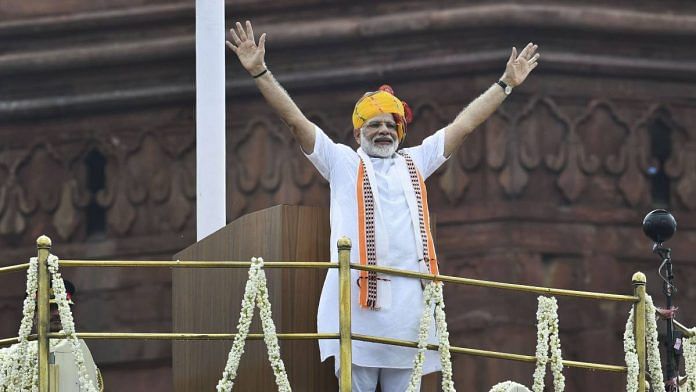New Delhi: On Wednesday, Prime Minister Narendra Modi entered 20th year of uninterrupted service in public office. Modi, the current and 14th Indian PM, served as the Gujarat chief minister from 7 October 2001 until taking the office in the national capital in May 2014.
He also remains the longest-serving Gujarat CM, with three consecutive terms, the longest serving head of elected governments among all Indian prime ministers, and the longest-serving non-Congress prime minister.
With his long tenure, Modi is in the same league as world leaders like former US president Bill Clinton (20 years), Franklin D. Roosevelt (16 years) and German Chancellor Angela Merkel (14 years).
First term as Gujarat CM
Narendra Modi first came to power on 7 October 2001 when he was chosen by then PM Atal Bihari Vajpayee to replace Gujarat CM Keshubhai Patel over health issues. Five months later, in February 2002, he was elected to power in a bypoll.
Prior to that, Modi had served as the Bharatiya Janata Party (BJP)’s national secretary and general secretary.
His initial years were eventful. In 2001, he led Gujarat as the state battled the aftermath of the Bhuj earthquake. The following year, communal riots broke out in the state after 59 passengers, mostly Hindu pilgrims, died in a train fire in Godhra.
In December 2002, Modi led the BJP in Gujarat polls. The party won 127 of the 182 seats. Three years later, however, he was denied a travel visa for religious intolerance over Gujarat riots.
Also read: Why has India’s China policy been such a failure? Question New Delhi’s assumptions first
CM to PM
In the 2007 assembly elections, the BJP again won the election with 117 seats under Modi. The following year, he persuaded Tata Motors to move its factory to build its Nano car after farmers’ agitation over land compensation in West Bengal’s Singur.
In the 2012 assembly elections, Modi again became the chief minister when the BJP got 115 seats.
He was made the BJP’s campaign committee chief for 2014 Lok Sabha Elections in June 2013, and the prime ministerial candidate in September 2013. On 16 May, the BJP won 282 seats as the National Democratic Alliance stormed to power as the first simple-majority government in three decades.
On 26 May 2014, Modi was sworn in as the prime minister.
Five years later, he led the BJP to an even bigger mandate with a historic 303 seats – with the party improving its best-ever performance in general elections.
Politically, his second term has so far seen the scrapping of Article 370 in Jammu and Kashmir, the passage of the controversial Citizenship Amendment Act, and the inauguration of the Ram temple in Ayodhya.
Now, he faces the daunting task of bringing the Indian economy back on track even as the Covid-19 pandemic rages on.
Early career
Modi began his political career as the Kankaria ward secretary of the Jan Sangh in 1965 in Ahmedabad. He joined the Rashtriya Swayamsewak Sangh in 1972 and led the Navnirman anti-corruption agitation in 1974.
He was also appointed as general secretary of Gujarat Lok Sangharsh Samiti, an RSS committee which was coordinating the response in Gujarat to the Emergency enforced by then PM Indira Gandhi.
He joined the BJP in 1987 and was appointed as the Gujarat general secretary within a year.
Also read: 6 years on, PM Modi’s core team is in the grip of IAS, IPS, IRS officers from Gujarat







God asked MR Modi to written his luck himself. Believe it or not but MR Modi is very very lucky person but also he is very hardworking man. Honesty is his property that why you can’t counter MR Modi on corruption issue bcz his family still living like a lower middle class and ppl knew this